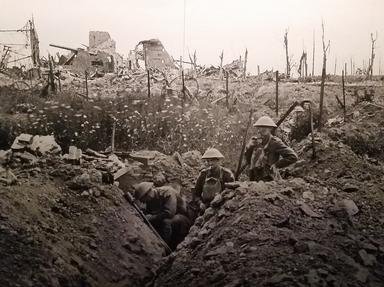Quiz Answer Key and Fun Facts
1. How much time elapsed between the assassination of Archduke Franz Ferdinand and Austria's declaration of war on Serbia?
2. Who commanded the British Expeditionary Force (BEF), in 1914?
3. Where did the French government retreat to in the expectation that Paris would fall?
4. What Russian general was encircled at Tannenberg?
5. With which country would you associate a 'pal's battalion'?
6. Which German commander intended his attack on Verdun 'to bleed the French white'?
7. Name the new French commander appointed to take charge at Verdun?
8. Who completed the plans for the Somme offensive in 1916?
9. Which country was the first to use chemical weapons i.e. gas in WW1?
10. Whose offensive in 1917 led to mutiny in the French army?
11. In which year was the 'Lusitania' sunk?
12. Who was the US Army Chief of Staff during WWI?
13. Where did the Central Powers have a significant break through in the Allied lines in 1917?
14. Who signed the Armistice on behalf of Germany in 1918?
15. Why was Ludwig von Reuter considered a national hero in Germany by 1919?
Source: Author
Fiachra
This quiz was reviewed by FunTrivia editor
bloomsby before going online.
Any errors found in FunTrivia content are routinely corrected through our feedback system.

